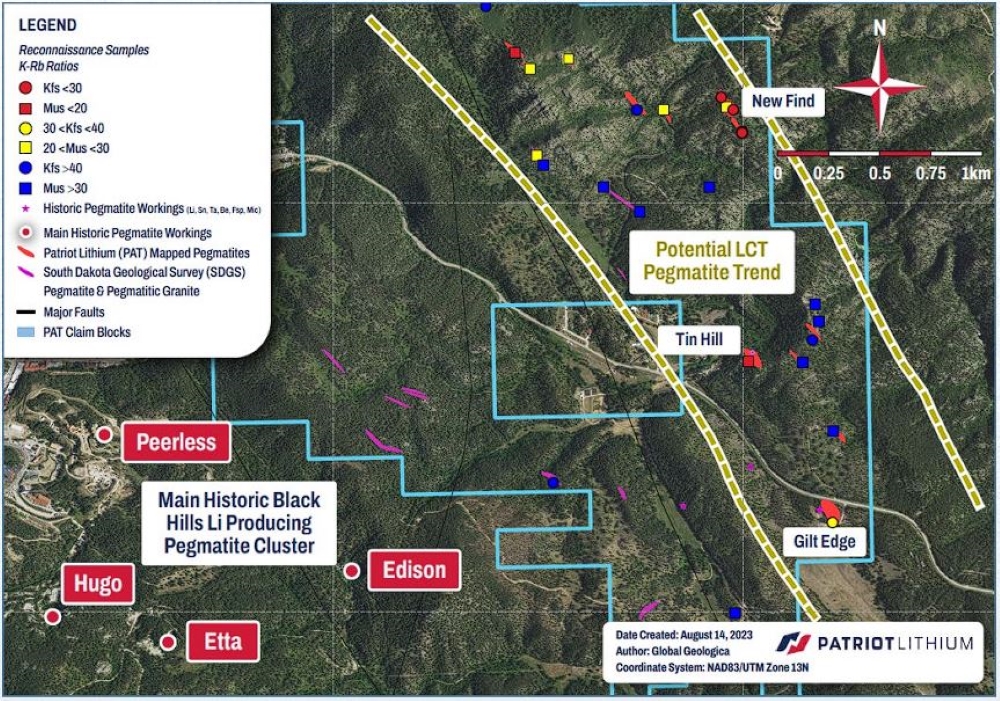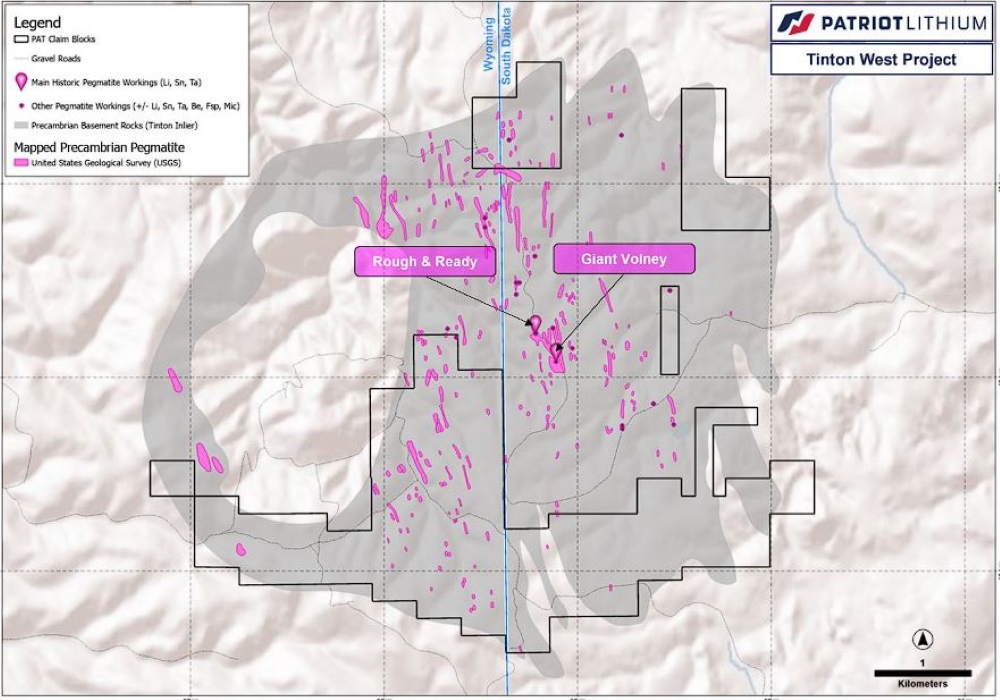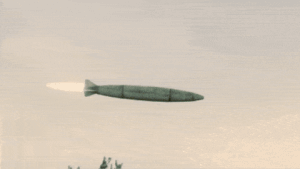Patriot Lithium hungry for more pegmatites after spotting a whopper 200m, surface outcrop at Black Hills

Patriot is going back for more sampling at its Black Hills projects. Pic via Getty Images.
- Mapping and sampling program extended after recent discovery of 200m long surface pegmatite at Keystone
- Black Hills region is home to historic mines that have yielded spodumene crystals up to >14m-long
- The follow-up program will help generate drill targets
After spotting several pegmatite outcrops at Keystone — including one traced at surface for over 200m along strike — Patriot Lithium is extending its mapping and sampling program at Black Hills in preparation for maiden drilling.
Patriot Lithium is expanding exploration at its prospective Black Hills portfolio, which includes the Keystone and Tinton West projects across South Dakota and Wyoming.
Keystone lies just 3.5km from the historical Etta lithium mine which yielded up to >14m-long spodumene crystals, believed to be the largest in the world, with head grades of up to ~6% Li2O.
It is also in the same region as Iris Metals’ (ASX:IR1) Beecher project, where recent drilling pulled up several outstanding hits including a highlight 60m at 1.21% Li₂O (true width) from 16m.
Pegmatite hits warrant more mapping and sampling
Further mapping and sampling in “identified areas of high prospectivity” at Keystone is underway after the explorer identified several outcropping pegmatites that were previously unmapped — one that could be traced over 200m along strike.
Patriot says its priority at Keystone is to systematically map and sample the previously identified, potentially Li-bearing pegmatites, followed by additional exploration across the Keystone claim package to identify new outcrops not evident in satellite imagery.
“Given that many pegmatites are concealed beneath the forest canopy and/or covered by thick layers of lichens, traversing the area on foot is the only means of locating these hidden pegmatites,” Patriot says.

Tinton West
While historical mapping of the Tinton district published by the United States Geological Survey in 1941 focused on tin-bearing pegmatites, it also identified several pegmatite outcrops that now sit within Patriot’s claims to the southwest and north of the historic Giant Volney tin, tantalum, lithium, niobium and feldspar mine.
One of the outcrops was identified in 1941 to be 465m long and up to 50m wide.
Patriot says the current exploration program will initially focus on historically identified outcrops, then expand to attempt to locate new outcrops within its claim blocks.
“Portable XRF and LIBS measurements will be used to assess samples in the field, and a batch of samples will be submitted for analysis,” Patriot says.

“This program will systematically sample and map pegmatite intrusions identified as potentially lithium fertile across Patriot’s Keystone and Tinton West claims,” Patriot CEO Nicholas Vickery says.
“This follow-up program is designed to help generate drill targets across Patriot’s Black Hills claims, particularly in areas where we have previously identified potentially Li-fertile pegmatite outcrops.”
Next Steps
The Keystone mapping and sampling program is scheduled for up to 4 weeks of fieldwork, followed by an additional up to 2 weeks on the Tinton West tenements.
Rock chip and soil samples collected will be sent for assaying and once received, results will be assessed to define and prioritise drill targets.
What else is Patriot up to?
A Phase 3 follow-up geochemistry program at its Gorman lithium project in Ontario, Canada is ongoing, where peak grades of up to 3.71% Li2O were returned from pegmatites across the >5km Gorman trend.
The mineralised LCT pegmatites at Gorman sit only 68km to the northwest and along trend of Frontier Lithium’s (TSXV:FL) world-class PAK-Spark lithium development project, one of the largest and highest grade hard rock lithium deposits in North America.
It also owns the Wickenburg project in Arizona, where spodumene sampling returned grades of up to 5.88% lithium oxide, and which PAT plans to re-prioritise during the Northern Hemisphere winter, when weather conditions are more favourable.
This article was developed in collaboration with Patriot Lithium, a Stockhead advertiser at the time of publishing.
This article does not constitute financial product advice. You should consider obtaining independent advice before making any financial decisions.
Related Topics

UNLOCK INSIGHTS
Discover the untold stories of emerging ASX stocks.
Daily news and expert analysis, it's free to subscribe.
By proceeding, you confirm you understand that we handle personal information in accordance with our Privacy Policy.








